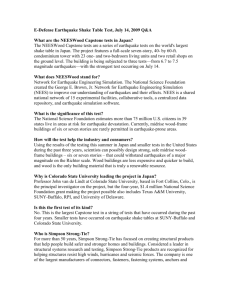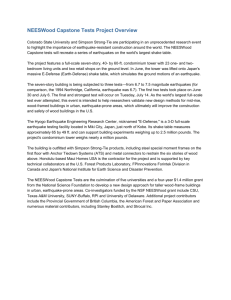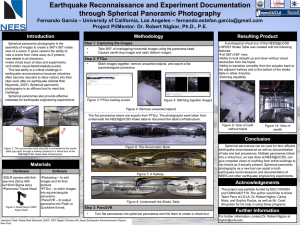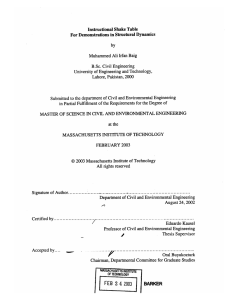NYSci: Earthquake Design Challenge
advertisement
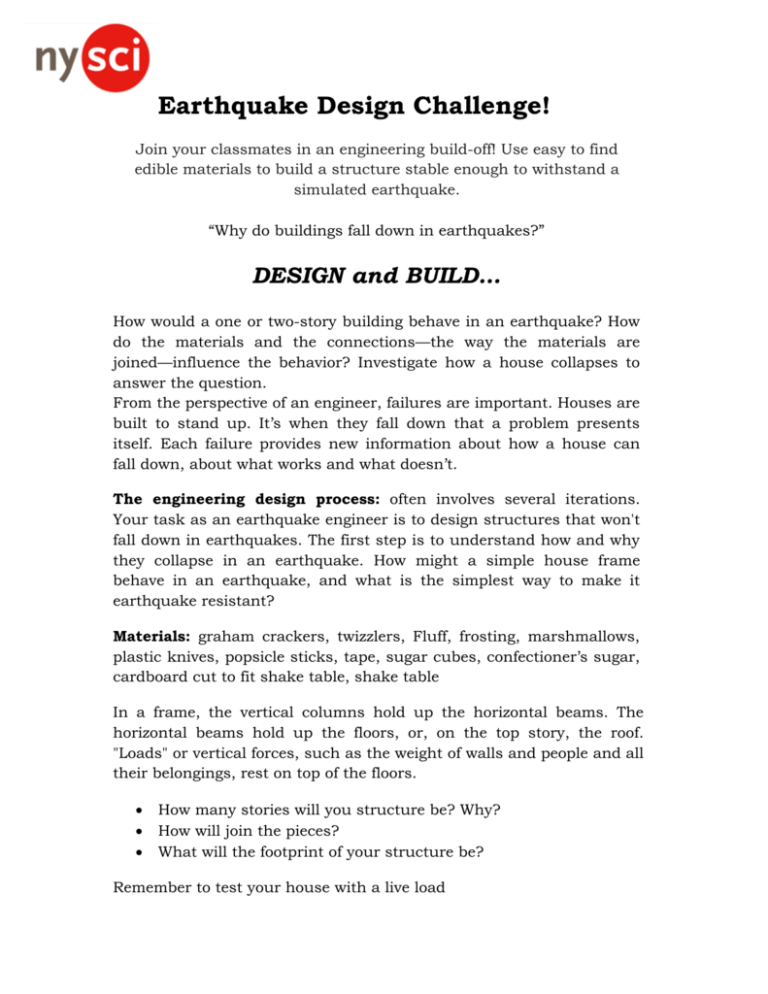
Earthquake Design Challenge! Join your classmates in an engineering build-off! Use easy to find edible materials to build a structure stable enough to withstand a simulated earthquake. “Why do buildings fall down in earthquakes?” DESIGN and BUILD… How would a one or two-story building behave in an earthquake? How do the materials and the connections—the way the materials are joined—influence the behavior? Investigate how a house collapses to answer the question. From the perspective of an engineer, failures are important. Houses are built to stand up. It’s when they fall down that a problem presents itself. Each failure provides new information about how a house can fall down, about what works and what doesn’t. The engineering design process: often involves several iterations. Your task as an earthquake engineer is to design structures that won't fall down in earthquakes. The first step is to understand how and why they collapse in an earthquake. How might a simple house frame behave in an earthquake, and what is the simplest way to make it earthquake resistant? Materials: graham crackers, twizzlers, Fluff, frosting, marshmallows, plastic knives, popsicle sticks, tape, sugar cubes, confectioner’s sugar, cardboard cut to fit shake table, shake table In a frame, the vertical columns hold up the horizontal beams. The horizontal beams hold up the floors, or, on the top story, the roof. "Loads" or vertical forces, such as the weight of walls and people and all their belongings, rest on top of the floors. How many stories will you structure be? Why? How will join the pieces? What will the footprint of your structure be? Remember to test your house with a live load Earthquake Design Challenge! …PREDICT and TEST ! Predict: 1. Give the students a few minutes to predict what will happen to their house structures. 2. Fasten the cardboard base to the shake table and shake the house. Shake the house! Now imagine there is an earthquake, and the ground beneath the house shakes. What happens to the house? To achieve a successful design, engineers imagine how a design might fail; their job is to identify (and prevent) each way the design could fail. NOTE: The table moves back and forth at a different rate than the handle turns. Results – What happened? Evaluate the test results to determine why it may have failed. Then you can redesign the structures with reinforcements to investigate how well a new strategy works to prevent the failure. How does your experience with the house differ from your predictions? How do you think the different shake table movement variables— frequency, amplitude, and duration—affect the results? Which part(s) of the house failed? Why do you think this happened? REDESIGN: What forces did the earthquake exert on the house? How did the house respond? What particular damage did the house sustain? Identify vulnerable places. Did the joints come apart? Did the beams, columns, walls, or roof break? List proposals to find answers to these questions: How could you explain this damage? How would you go about preventing it? What other materials can you think of to use? For which parts? How will you redesign your structure? Challenge! Can you make a house that withstands an earthquake? Challenge! Can you make a house that withstands an earthquake?







